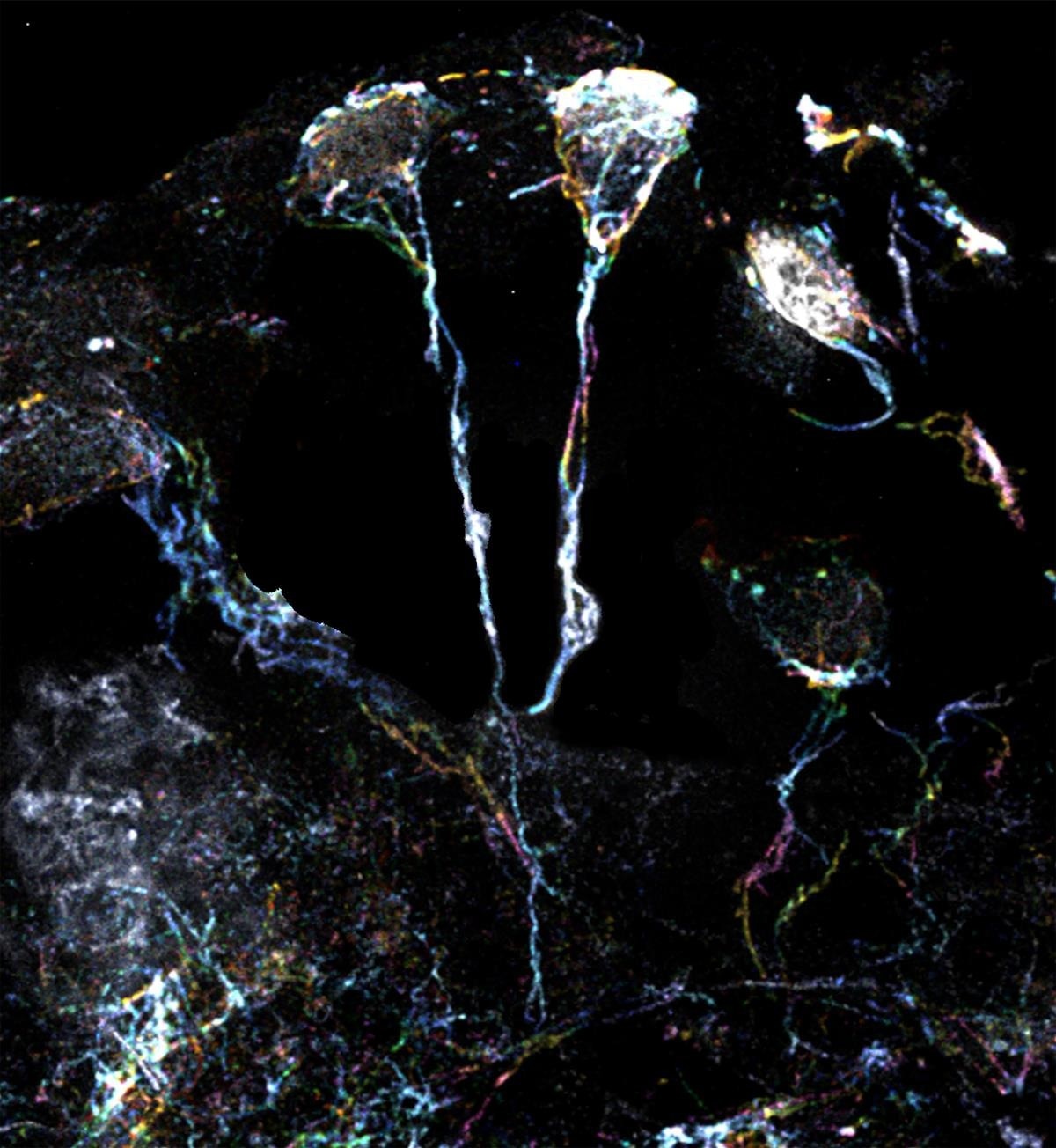Researchers at the Mechanobiology Institute (MBI) at the National University of Singapore (NUS) and Duke-NUS Medical School have uncovered a novel mechanism for reawakening dormant neural stem cells, which may lead to the development of new treatments for neurodevelopmental disorders like autism, cerebral palsy, and learning disabilities.
 In the Drosophila brain, dormant neural stem cells with protrusions rich in actin filaments. Image Credit: Duke-NUS Medical School
In the Drosophila brain, dormant neural stem cells with protrusions rich in actin filaments. Image Credit: Duke-NUS Medical School
Most neural stem cells, which develop from the nervous system and can differentiate into different kinds of brain cells, remain dormant in the adult mammalian brain until they are stimulated by particular signals. When they awaken, they generate new neurons that support the growth and repair of the brain.
Neural stem cell activation defects are linked to neurodevelopmental problems such as microcephaly, a condition where a baby's head is significantly smaller than expected due to improper brain development, and age-related cognitive decline.
About 5% of children and adolescents worldwide suffer from neurodevelopmental problems, which limit their ability to think, communicate, behave in adaptive ways, and use their psychomotor skills.
To investigate this activation, scientists looked at fruit flies or Drosophila. Fruit fly neural stem cells are latent until they are stimulated, just like those of mammals.
Their research, which was published in the journal Science Advances, demonstrated the significance of astrocytes, a kind of glial cell that is usually assumed to offer structural and nutritional support, in arousing latent neural stem cells in fruit fly brains.
The researchers studied the microscopic fiber patterns that are indicative of fruit fly neural stem cells that are inactive using super-resolution microscopy with a 10-fold magnification. These tiny structures are protrusions from the cell body that are rich in actin or protein filaments.
They have a diameter of around 1.5 µm, which is 20 times smaller than the diameter of a human hair. These filaments can assemble when a certain kind of Formin protein activates them.
We decided to home in on this pathway as variants in Formin levels are associated with neurodevelopmental disorders like microcephaly in humans. Understanding this pathway could provide new insights into developing solutions to treat neurodevelopmental disorders.”
Dr. Lin Kun Yang, Study First Author and Research Fellow, Duke-NUS Medical School
The researchers noticed that astrocytes emit a particular kind of signaling protein known as folded gastrulation, or fog. This sets off a series of events, including activating the Formin protein pathway to regulate actin filament movement.
In the end, these procedures awaken brain stem cells from their slumber. Subsequently, they begin to split, generating new neurons that aid in brain development and repair.
Next, in response to Fog released by astrocytes, the receptor protein known as GPCR in neural stem cells activates the signaling cascade that governs the development of actin filaments in neural stem cells.
GPCRs play important roles in basic cellular functions. As a result, 34% of FDA-approved medications target the GPCR protein family, making it a prominent pharmacological target for treating numerous human diseases.
Thus, understanding how this signaling route affects the reactivation of neural stem cells may offer a technique for treating neurodevelopmental problems with current medications.
Our findings add new knowledge to the limited body of research on mechanisms governing the reactivation of dormant neural stem cells. With our discovery of astrocytes as a key player in the reactivation of neural stem cells, we now have a new way to influence neural stem cell behavior.”
Wang Hongyan, Professor and Study Senior Author, Duke-NUS Medical School
Wang Hongyan is an Acting Programme Director of Duke-NUS’ Neuroscience & Behavioural Disorders Research Programme.
This not only advances our fundamental understanding of how astrocytes influence brain cell development but also opens new avenues for advancing therapies for neurological disorders, brain aging and injury.”
Patrick Tan, Professor and Senior Vice-Dean for Research, Duke-NUS Medical School
Currently, the researchers are investigating additional astrocyte signals that may impact neural stem cell activity. They also intend to investigate the possibility that comparable systems influence the human brain's development.
As a medical research and teaching pioneer, Duke-NUS is dedicated to advancing patient care via cutting-edge scientific advancement. This research is a component of its continuous endeavours to expand knowledge of the basic processes operating in the human brain to develop novel therapeutic strategies, particularly for those suffering from neurological disorders.
Source:
Journal reference:
Lin, K.-Y., et al. (2024) Astrocytes control quiescent NSC reactivation via GPCR signaling–mediated F-actin remodeling. Science Advances. doi.org/10.1126/sciadv.adl4694.